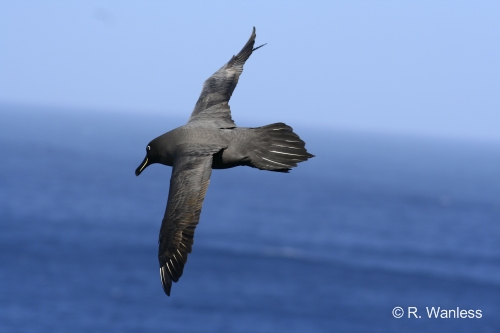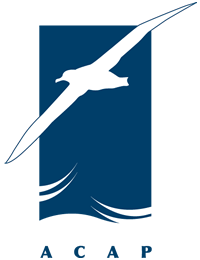Tshikana Rasehlomi & Mathieu Rouault (University of Cape Town, South Africa) report on satellite-tracking Sooty Albatrosses Phoebetria fusca from sub-Antarctic Marion Island.
“The study aims to explore the role of mesoscale oceanographic features in creating foraging habitats for the majestic, yet elusive, top marine predator, the albatross. The study uses sooty albatross tracked from Marion Island, one of the Prince Edward Islands. The population of the sooty albatross (Phoebetria Fusca) [sic] has declined to low and unsustainable levels due to predation and conflict with high seas fisheries. To address the conservation status of this seabird, the study aims to investigate the at-sea distribution of the sooty albatross in relation to dynamic marine pelagic environments. The study builds on previous knowledge of seabird interactions and foraging ecology to understand the nature of seabird aggregations in relation to the locality of mesoscale oceanographic features.”

A Sooty Albatross over the sea, photographed by Ross Wanless
Reference:
Tshikana Rasehlomi, T. & Mathieu Rouault, M. 2013. The albatross: an indicator of regions of high mesoscale variability in pelagic environments. In: ACCESS Research Highlights 2013. pp. 28-27.
John Cooper, ACAP Information Officer, 15 October 2013

 English
English  Français
Français  Español
Español